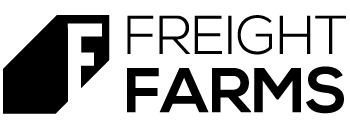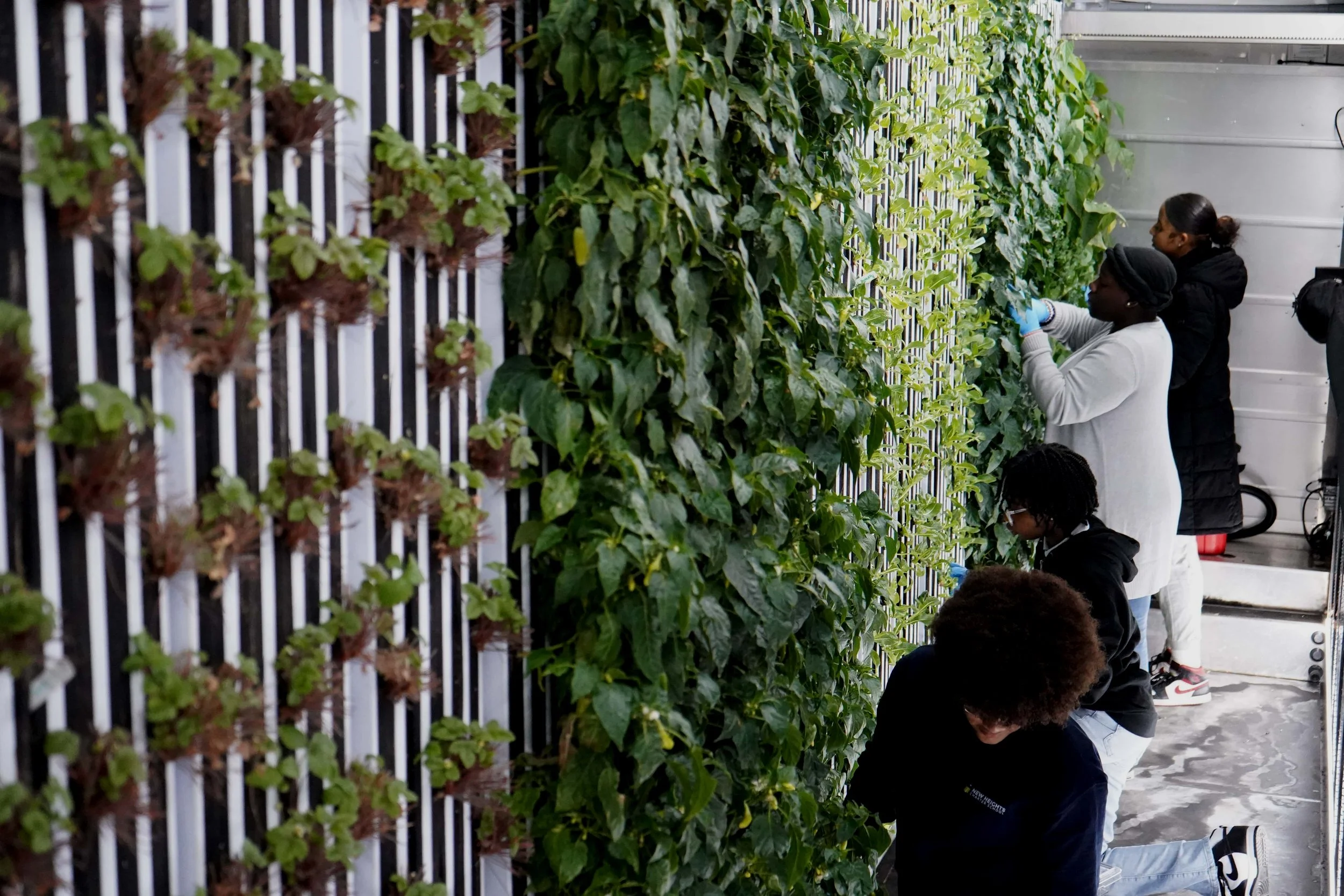Webinar Part 1: A Freight Farmers Journey
Have you been considering launching a small business farm using the Freight Farms platform?
When people begin researching how to become a freight farmer, they ask dozens of questions about running the Leafy Green Machine as a business, where to find customers or how to do market research. While we provide resources on how to get started, we realize how important it is to hear from farmers currently building a business with the Leafy Green Machine to understand their experience firsthand.
That’s why last week we held a webinar with two freight farmers so they could share their journey to launching a small business with the LGM. We covered everything from market research and financing to what crops to grow and how to reach new customers. Below find a recap on all the things we talked about, or click here to watch the full Webinar recording!
1. Background on the Founders of Agora Greens
Ian and David have been friends for over a decade, and when David surfaced the topic of Freight Farms in the beginning of 2016, it peaked Ian’s interest. While they both had experience with gardening and starting their own businesses, freight farming was still a very new concept to them.
Ian founded his own landscape design firm in 2002 and grew it into a successful business over the years. After 30 years in the investment business, David founded a company called Agora Gardens, which designs and builds organic raised bed vegetable gardens for corporations as a human resource benefit for company employees.
2. Market Research and Business Development
Before purchasing the LGM, both Ian and David did their due diligence to make sure there was an interest in their local market. What did this involve? They started talking! Ian and David visited local restaurants and spoke to chefs to see if they would be interested in the product they would be growing. They asked chefs and produce buyers if they be interested in purchasing fresh greens locally year-round. There was immediate interest in the product, but also questions about how they would be growing. When you’re the first to do this in your area, you have the responsibility to educate your future consumers about growing hydroponically inside a shipping container!
3. Financing the LGM
Once the pair identified that launching an LGM was a viable business opportunity in their area, they started looking into how to finance the project. David and Ian decided to use Farm Credit East to help finance their LGM. Freight farming was a slightly new concept at the time, so they had to meet with the loan provider to get him up to speed with their vision and the capabilities of the Leafy Green Machine. They ultimately chose to finance ⅓ of the cost themselves, and Farm Credit covered the remaining 2. That helped the process move quite quickly - only a couple weeks from start to finish. Some of the documents they had to provide during this process were: 2 years personal income, bank statements, credit reports.
“That process didn’t take too long - from start to finish it was only a few weeks.”
4. Finding a Site for the LGM
The Agora Greens’ LGM is located in Walpole, Massachusetts on property that is zoned as Industrial Mixed-Use. David and Ian wanted to make sure that the site they chose had the appropriate amenities (water and electricity), so they decided it was easiest to house it at the property Ian’s landscape business was leasing at the time. To prep the site, they had to follow Freight Farms instructions on leveling the ground, and had an electrician make sure the hookup was to spec for the LGM.
5. Farm Camp and Support
Even though both David and Ian had experience gardening, they still had a lot to learn when it came to growing in the LGM. Attending Freight Farms two-day Farm Camp session was helpful not only for getting familiar with operations, but also for networking with other freight farmers launching their own businesses. In addition, they find the Online Knowledge Base and Farmer Community Forum to be an incredibly useful tool once they got up and growing.
6. Choosing What to Grow
Ian and David started out growing what we recommend for beginning freight farmers, which is head lettuces. Once they had success with those initial greens, they started to speak with the restaurant chefs they were supplying to see what they would be interested in purchasing. They branched out and began growing watercress, arugula, and more based on the feedback from their customers.
“Listen to your clients and grow from there.”
7. Community and Customer Reactions
Agora Greens supplies a variety of different venues, from restaurants and country clubs to farmers markets. They’ve gotten great feedback from all their customers about the quality and variety of the produce they supply. Some customers have requested new types of crops, which they are happy to experiment growing.
Ian and David also learned that there’s an opportunity to really engage customers through packaging and marketing. They've gotten creative by labeling their packages with the music each crop was grown to!
8. Future Plans
David and Ian have been looking into expanding their business and buying additional LGMs to scale operations. They are bringing on new customers and need to ensure they have the volume to scale!
We’re incredibly grateful that Ian and David could share their journey in becoming freight farmers with us, and we hope to host similar webinars in the future. Check out Part 2 of this blog series where we breakdown some of the questions asked during this webinar. You can also watch the full recording here and get more details on how these two freight farmers launched their business with the LGM.












Freight Farms tackles pressing agricultural challenges like PFAS contamination, soil scarcity, and climate volatility. Learn how our hydroponic systems provide clean, sustainable solutions for resilient food systems.